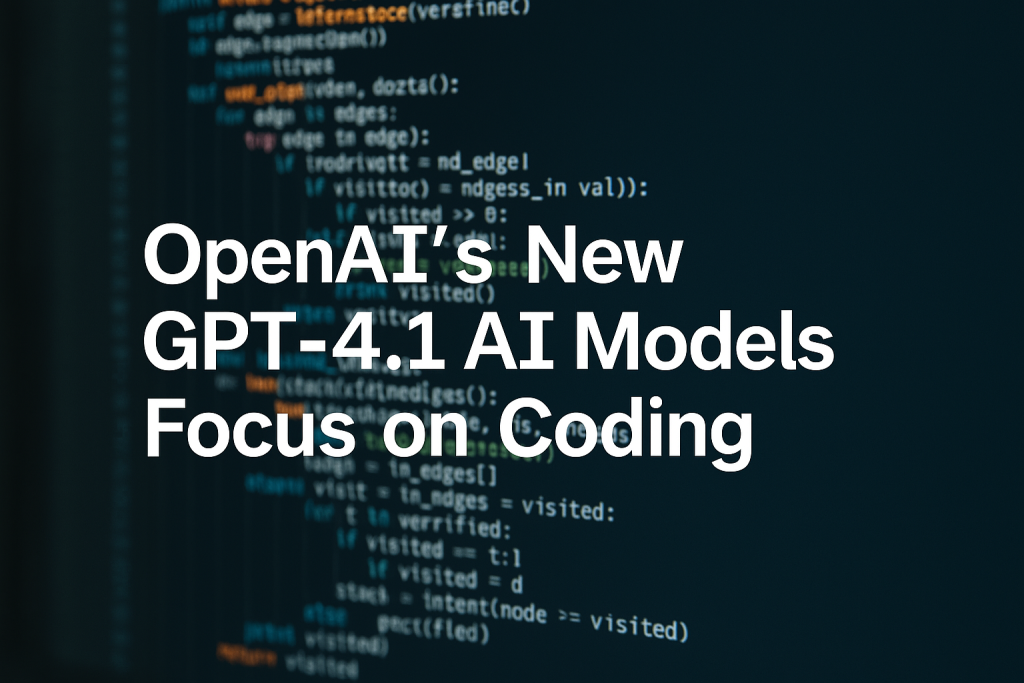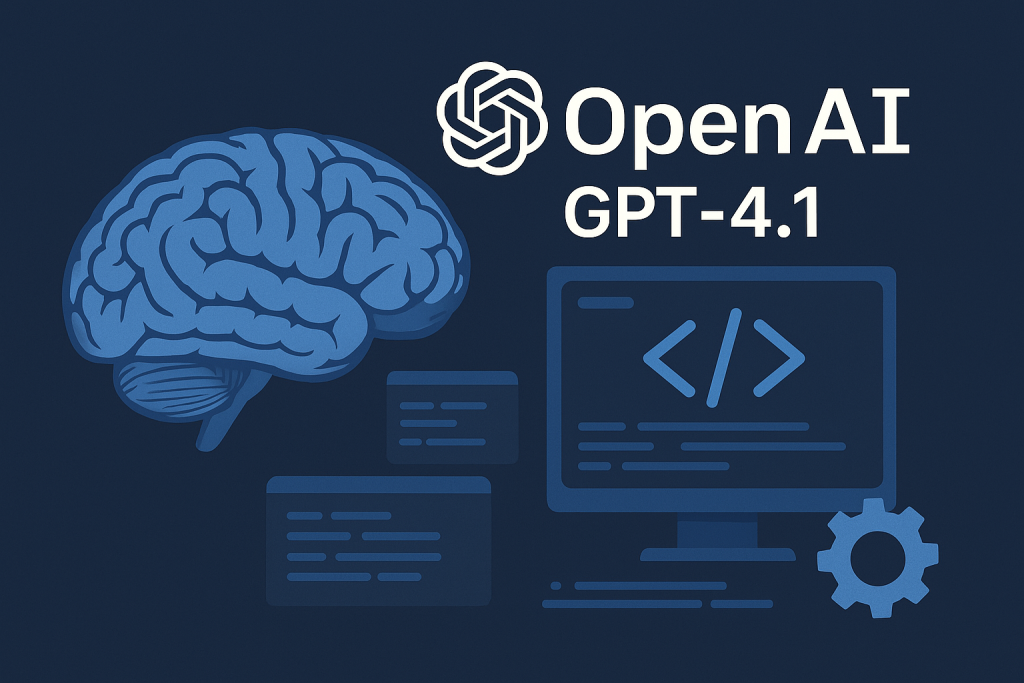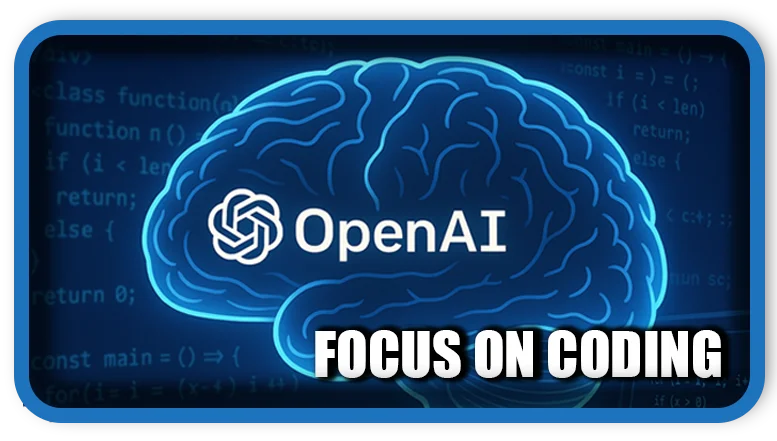⏲️ Estimated reading time: 5 min
OpenAI’s new GPT-4.1 AI models focus on coding. OpenAI has launched GPT-4.1, a powerful evolution of its AI models, with enhanced focus on coding. This version brings smoother performance, better reasoning, and more reliable outputs for developers and businesses alike.
OpenAI Launches GPT-4.1 With Improved Coding Capabilities
OpenAI has once again raised the bar in the field of artificial intelligence with the introduction of GPT-4.1, the latest iteration of its groundbreaking language model. Designed with developers in mind, GPT-4.1 focuses more intensely on coding support, reasoning tasks, and response consistency. This development marks a significant leap forward in practical applications of generative AI.
What’s New in GPT-4.1?
GPT-4.1 builds upon the robust architecture of GPT-4, enhancing several critical areas:
- Improved Code Generation: GPT-4.1 now provides more accurate, efficient, and readable code snippets. It handles a broader range of programming languages, including Python, JavaScript, C++, and even lesser-used ones like Rust or Haskell.
- Stronger Reasoning Abilities: The model performs better on tasks involving logic and critical thinking, which are crucial for debugging and code optimization.
- Faster Response Time: GPT-4.1 responds more quickly, thanks to model fine-tuning and architectural tweaks.
- More Reliable Output: One of the key focuses is reducing hallucination (fabricated content). GPT-4.1 makes fewer factual errors and sticks more closely to accurate data and instructions.
These improvements make GPT-4.1 a formidable assistant not just for casual users or writers, but for developers and engineers looking to streamline workflows and accelerate software development.

GPT-4.1’s Focus on Developers
One of the standout features of GPT-4.1 is its developer-centric enhancements. OpenAI has clearly identified coding as a key use case and made improvements in this area a top priority.
Smarter Autocompletion and Snippet Generation
Developers can now use GPT-4.1 to generate entire functions or blocks of code with minimal input. It understands context better, providing relevant libraries or frameworks that apply to the problem.
For example:
- A request for a React login form now includes proper state management.
- A Python API call suggestion will include both error handling and authentication headers.
Debugging and Optimization
GPT-4.1 doesn’t just generate code it can analyze existing code to find bugs, inefficiencies, or suggest improvements. This includes spotting deprecated methods, offering performance tweaks, and even explaining code logic line-by-line.
Multimodal Capabilities Still in Focus
While GPT-4.1’s main improvements are textual, it retains support for multimodal inputs like images (through GPT-4-turbo), enabling more complex applications like reading diagrams or generating front-end designs from wireframes.
GPT-4.1 vs GPT-4: Key Differences
| Feature | GPT-4 | GPT-4.1 |
|---|---|---|
| Code Generation Quality | Good, with occasional errors | Excellent, with fewer bugs |
| Reasoning & Logic | Above-average | Greatly improved |
| Speed | Decent | Faster and more efficient |
| Output Reliability | Sometimes inconsistent | Significantly more accurate |
| Developer Tools | Basic integration | Advanced coding support |
This evolution shows OpenAI’s increasing emphasis on building reliable tools for real-world applications.
Business and Educational Use Cases
The power of GPT-4.1 extends beyond solo developers:
- Software Companies can use GPT-4.1 to build better AI copilots for IDEs or automate documentation.
- Startups can prototype faster with AI-backed coding support.
- Educational Platforms can integrate GPT-4.1 to teach coding interactively, offering real-time feedback.
- Researchers can use the model for code-based simulations, data analysis, or scripting in various domains.
With strong API support and ChatGPT integrations, GPT-4.1 is ready to plug into existing workflows, making it easier than ever to bring AI coding assistance to scale.
ChatGPT Pro and GPT-4.1 Access
GPT-4.1 is available to users through ChatGPT Plus ($20/month) under the GPT-4-turbo setting. This version is used by default in OpenAI’s latest updates and comes with enhanced memory, personalization features, and advanced tools like Python code interpreter and file analysis.
Users can:
- Upload code or files for debugging
- Ask complex queries involving code logic
- Build and test code snippets in real time
This combination of accessibility and power makes GPT-4.1 an essential tool for modern coding environments.

OpenAI’s Vision: AI as a Partner in Development
With GPT-4.1, OpenAI pushes closer to its vision of AI acting as a true coding partner not just a glorified autocomplete. It understands projects, workflows, and business goals. Whether you’re building a startup MVP or managing an enterprise-level system, GPT-4.1 aims to reduce cognitive load and speed up production.
This new direction hints that future versions like GPT-5 might focus even more on integration, automation, and multimodal interactions, further blending human creativity with machine intelligence.
Final Thoughts
OpenAI’s GPT-4.1 release represents a pivotal moment for both AI development and the coding community. With its robust enhancements and developer-first mindset, GPT-4.1 stands out as more than a language model it’s a full-featured assistant, educator, and collaborator for anyone building software.
If you’re a developer, entrepreneur, or educator, now is the time to explore how GPT-4.1 can revolutionize your coding workflows and help you build smarter, faster, and more efficiently than ever before.
🏷️ Tags: GPT-4.1, OpenAI, AI coding tools, ChatGPT Plus, GPT-4-turbo, code generation, software development, developer tools, AI assistant, programming AI
Only logged-in users can submit reports.
Discover more from HelpZone
Subscribe to get the latest posts sent to your email.

